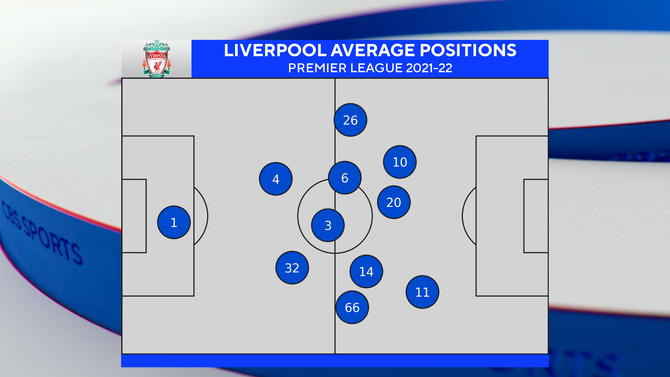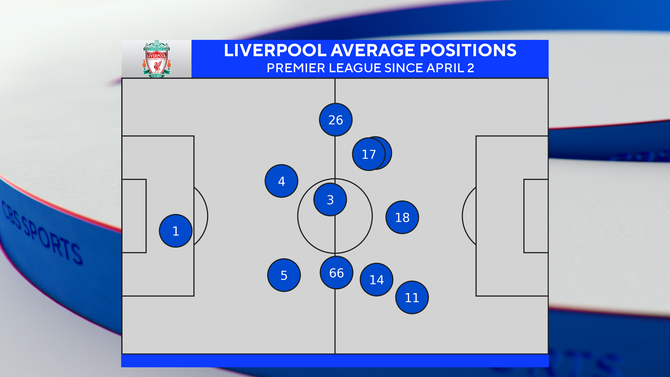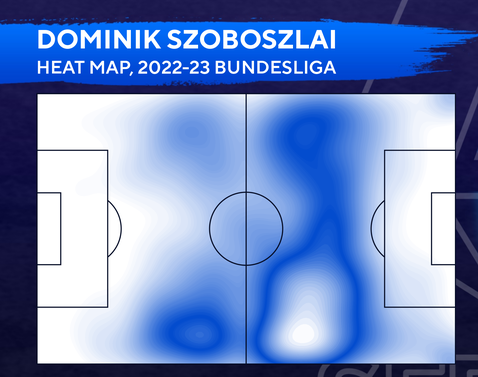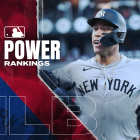
If there was a source of succor for Liverpool in the final weeks of their disappointing 2022-23 season it was the redeployment of Trent Alexander-Arnold as an inverted full back, free to step into midfield and dictate play from there. That one tweak, not necessarily a brand new look for the Reds but rather a stride along the path that the right back had already been on, opened up all sorts of opportunities for Jurgen Klopp. His transfer business so far would suggest he is eager to exploit them.
Throughout their imperial era, which it is perhaps too soon to pronounce over given how they responded to their last down year by taking every competition they were involved in down to the wire in 2021-22, Liverpool's patterns in attack were clearly defined. Their 2-3-5/3-2-5 hybrid unleashed Andrew Robertson and Alexander-Arnold to bomb down the flanks, providing the width that freed Sadio Mane and Mohamed Salah to attack the space vacated by the false nine infield from them. When it all clicked, as it so often did, this was an irresistible scoring machine.

However, freeing up both full backs to fly up the pitch asked a great deal of the players they were leaving behind. Fabinho and Virgil van Dijk in particular had to cover huge tracts of space. In the graphic above those two and Joel Matip are the only players whose average position is in their own half. If opponents broke the line of a press that grew steadily less febrile as the season wore on then it would be up to that trio, in particular the center backs Van Dijk and Matip, to sweep up the danger. Similarly, Jordan Henderson, the No. 14 who is almost level with Alexander-Arnold, could plug gaps behind his full back, allowing Liverpool to get one of the greatest passers the Premier League has ever seen into positions where he could cause chaos. In 2021-22 a right back registered 13 expected assists for the season. No one else in the league got more than 7.5.
But, the miles in their legs added up last season so the imperious air of past years ebbed away in the likes of Van Dijk and Fabinho. The telescopic legs of the latter in particular were nowhere to be seen, where once he would ease players off the ball he was now giving away clumsy free kicks. The Brazilian needed more cover in midfield and Van Dijk could no longer be relied on to bully off the ball any forwards charging into space down the Liverpool left. Something had to change and so it did, starting after the international break in March (though the graphic below discounts the Manchester City game on April 1, solely because other No. 17 Curtis Jones would be layered on top of Liverpool's forward wide on the left).

The changes between the two images might seem fairly minor -- that system does not look all that far away from the previous 2-3-5 -- but their impact has been profound. Alexander-Arnold and Robertson now sit deeper, forming the midfield three with Fabinho, while ahead of them are Curtis Jones and Henderson, now tasked with getting up alongside the frontline (it looks like Luis Diaz and Darwin Nunez are giving Jones a piggyback) and attacking the penalty area.
That is a system that comes with complications. In inverting Alexander-Arnold, Klopp is likely to ask Robertson to tuck in on occasion in much the same fashion as Nathan Ake and Kyle Walker do for Manchester City or Ben White for Arsenal. The latter does have license to bomb on when the Gunners are facing more favorable opponents but it is notable that those three players mentioned above had shown significant center back skills, in no small part because two of them are. Robertson might be able to do the same for Liverpool but few had ever seen him try before last season. Then there are questions in the front three. If your central midfielders are taking on the role that the full backs used to then it stands to reason that your wide forwards are going to act more like wingers. That makes sense for Luis Diaz but putting Salah on the furthest reaches of the attack would seem a pity. Add to that questions over whether even Nunez or Cody Gakpo can have the same propulsive impact on those around them as the best version of Roberto Firmino did and there are more than enough doubts about whether this new approach of Liverpool's can be as devastating as the previous iteration.
What is clear, however, is that Klopp will be sticking to it. That much is clear in the two major additions made to the squad this summer. If you want your midfielders to contribute in the final third then Mac Allister and Dominik Szoboszlai make more sense than Henderson or even the promising young Jones. Thiago might too but his injury record is so chequered that it is hard to plan around him (though it has been suggested that he turned down a move to Saudi Arabia, it is also true that Al-Ahli, the club who the Public Investment Fund were looking to place the Spaniard at, had doubts over whether they would want to pay star wages for infrequent presence). The new men had a combined 26 goal involvements for Brighton and RB Leipzig last season, Mac Allister's goal return may be swelled by six penalties but both of these players were decisive contributors in the final third.
In Mac Allister's case, the fit seems simple enough. He can simply play as a left-sided eight as he so often did at Brighton and will bring balance aplenty as a player capable of mopping up defensively, progressing and contributing in the final third. More intriguing is how Szoboszlai fits in, not least because if he is on the right side he will be dovetailing with the two men who perhaps defined Liverpool's attacking greatness: Alexander-Arnold and Salah. Getting the latter into positions where he can get shots should still be the key strategic priority of Klopp; 2022-23 saw the Egyptian make more passes into the box but take fewer touches in it, averaging more than a shot fewer per 90 minutes than in the previous season.

Szoboszlai might be arriving as another of the central midfielders but for RB Leipzig, a team that tend not to operate with natural wingers, last season he fulfilled a role that seems like a perfect fit for Salah. From his attacking midfield berth, the Hungarian would drift out to the right flank and create from there. It's easy to see him doing the same in the Premier League, dragging opponents out of position and creating space around for a wide forward to accelerate into. Behind them lies Alexander-Arnold, picking passes from pockets of space. The theoretical fit is tempting in the extreme.
Whether that works in practice remains to be seen; Liverpool's front five of old needed time to deliver with the levels of synchronicity that they uncovered at their best. It will take time for Szoboszlai to know when to move, where he should be when Salah wants to get into the box. But the blueprint looks tempting indeed. That is the sign of yet more recruitment done right at Anfield.






















